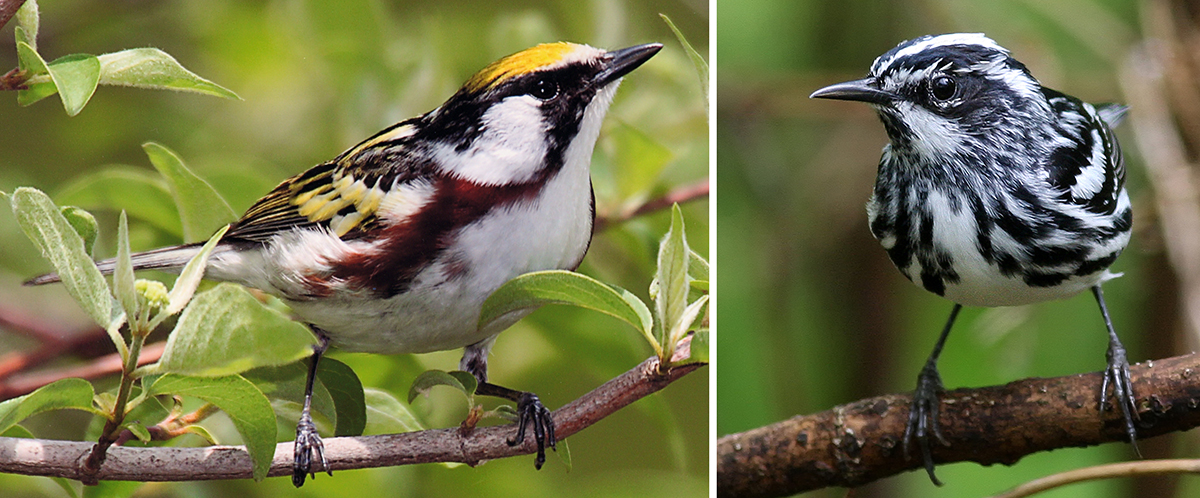STEPHANIE WEST
Senior Naturalist – Blendon Woods and Rocky Fork Metro Parks

You know all about baseball season, football season, and basketball season, but are you familiar with warbler season?
Starting around mid-April and running through the end of May, Ohio is a stopover on the great marathon known as warbler migration! Itty bitty birds, barely 5 inches from head to tail and weighing in at under half an ounce, make an epic flight from their winter homes in Central and South America every spring. Some stay here in Ohio, but others continue north, a few with Alaska and northern Canada as their finish line!
Most are brightly colored jewels of the trees, sporting feathers in vivid yellow, jet black, fiery orange, vibrant blue, and bright white patterns.
During the brief season, you have a daily opportunity to be a spectator to their monumental journey. As waves of migrants arrive, they spend their days gorging on insects, bulking up in preparation for their nocturnal flight. If they can avoid brightly lit buildings and other hazards, they may cover 200 miles in one night. Grab a pair of binoculars and head out to your nearest Metro Park for a courtside view of the action. Mornings often yield the best results, as the birds, exhausted from a night of flying, are very active in search of prey.
Where should you look? UP! Start strength training for your neck muscles to avoid that too-common seasonal injury, warbler-neck. These forest sprights tend to flit through the treetops, necessitating a rather unnatural stance for us—head tilted back, eyes up. Don’t worry about being benched though—the pros know that sometimes a park bench is the perfect spot to warbler-watch! Join a naturalist-led program [metroparks.net] or scout the edge of the forest where the trees are shorter. Listen for high-pitched whistles or buzzy songs, then let your eyes follow the action in the high branches, and quickly focus your binoculars on every tiny fast-moving shape you see. You’ll have acquired a love of the game after your first few sightings!
Warblers are intimately tied to our forests. Because their primary food is caterpillars and other insects, they rarely come to bird feeders. Our native oaks, maples, hickories, willows, viburnums, dogwoods, etc, provide food for the caterpillars, that in turn, provide nourishment for so many birds. If you want to be warblers’ biggest fan, consider removing non-native trees and shrubs in your yard and replacing them with natives that will attract moths and butterflies. Soon you may be able to enjoy warbler season right in your own backyard!


Such a well written article about the spring migration of our beautiful warblers. Beautiful selection of pics, too.
Would love to visit with my teenage daughter’s.
I love these birds.